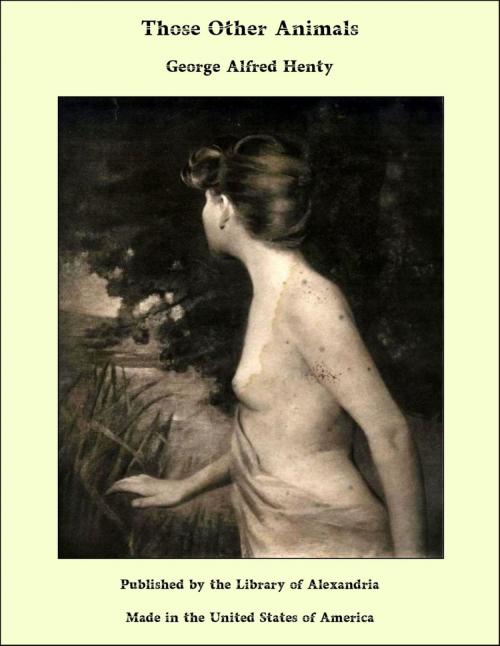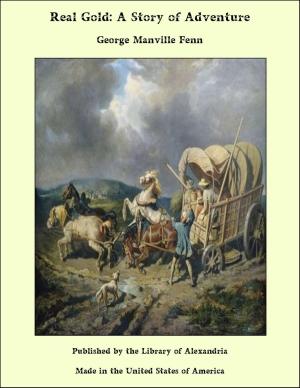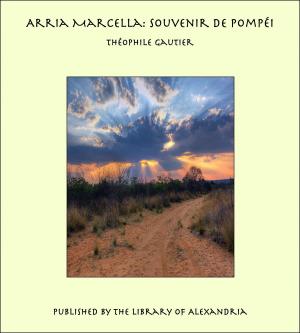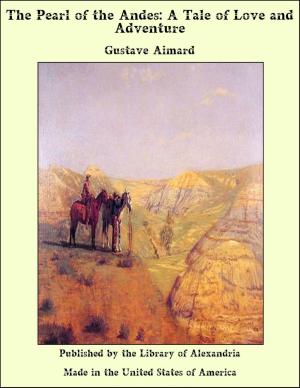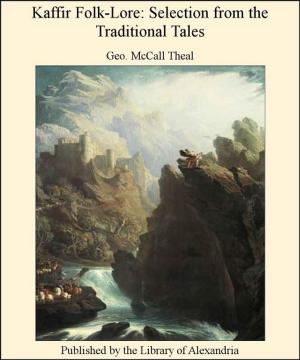| Author: | George Alfred Henty | ISBN: | 9781465619037 |
| Publisher: | Library of Alexandria | Publication: | March 8, 2015 |
| Imprint: | Language: | English |
| Author: | George Alfred Henty |
| ISBN: | 9781465619037 |
| Publisher: | Library of Alexandria |
| Publication: | March 8, 2015 |
| Imprint: | |
| Language: | English |
IT must be admitted that it is hard upon the citizens of the United States that the elephant is not found in the Western Continent. The Americans have an especial fondness for big things. They are proud that they possess the biggest Continent, the largest rivers, the longest railways, the loftiest trees, the most monster hotels, and the tallest stories of any people in the world. It is, then, extremely hard upon them that they have not also the biggest quadrupeds. Two good-sized quadrupeds, indeed, they had—the bison and the moose—but they are fast disappearing. As they were not the very biggest, the citizens of the States had no interest in preserving them. Had the elephant been there, he would, doubtless, have been religiously protected as a subject of national glorification. The elephant is not thought so much of in the countries where he resides. In India he has been utilised, but in Africa is prized only for his flesh and his tusks. He is considered to be a highly intelligent animal, and in books for children is generally spoken of as the sagacious elephant; but in proportion to his size he is rather a poor creature in the way of intelligence, and the brain of the ant, tiny as it is, contains more real thinking power than the skull of the elephant. It can hardly be doubted that he owes much of the respect in which he is held by man to the peculiar formation of his proboscis. A large nose is generally considered as a sign of ability in man, but even the largest human nose is, since the change of fashion abolished its usefulness as a snuff-box, incapable of any other function than that of an organ of smell, and as a convenient support for a pair of spectacles. It is practically fixed and immovable, at least for all purposes save that of expressing the emotions of scorn and disdain. Man has, then, never recovered from the astonishment and admiration experienced by the first discoverer of the elephant at finding a beast capable of using his nose as a hand—of conveying his food to his mouth with it, and of utilising it in all the various work of life. This peculiarity has been more than sufficient to counterbalance the many obvious defects in the appearance of the elephant—his little pig-like eyes, his great flat ears, his short and stumpy tail, and the general hairless condition of his leathern skin. Then, too, mankind, even in the present day of advanced education, are worshippers of brute strength, as is evidenced by the attraction of the feats performed by strong men; and the elephant possesses enormous strength. This, however, is positive rather than relative, for he is a poor creature indeed in comparison with the flea, or even with the beetle, both of which can move weights enormously exceeding their own. Even the donkey could, bulk for bulk, give the elephant points.
IT must be admitted that it is hard upon the citizens of the United States that the elephant is not found in the Western Continent. The Americans have an especial fondness for big things. They are proud that they possess the biggest Continent, the largest rivers, the longest railways, the loftiest trees, the most monster hotels, and the tallest stories of any people in the world. It is, then, extremely hard upon them that they have not also the biggest quadrupeds. Two good-sized quadrupeds, indeed, they had—the bison and the moose—but they are fast disappearing. As they were not the very biggest, the citizens of the States had no interest in preserving them. Had the elephant been there, he would, doubtless, have been religiously protected as a subject of national glorification. The elephant is not thought so much of in the countries where he resides. In India he has been utilised, but in Africa is prized only for his flesh and his tusks. He is considered to be a highly intelligent animal, and in books for children is generally spoken of as the sagacious elephant; but in proportion to his size he is rather a poor creature in the way of intelligence, and the brain of the ant, tiny as it is, contains more real thinking power than the skull of the elephant. It can hardly be doubted that he owes much of the respect in which he is held by man to the peculiar formation of his proboscis. A large nose is generally considered as a sign of ability in man, but even the largest human nose is, since the change of fashion abolished its usefulness as a snuff-box, incapable of any other function than that of an organ of smell, and as a convenient support for a pair of spectacles. It is practically fixed and immovable, at least for all purposes save that of expressing the emotions of scorn and disdain. Man has, then, never recovered from the astonishment and admiration experienced by the first discoverer of the elephant at finding a beast capable of using his nose as a hand—of conveying his food to his mouth with it, and of utilising it in all the various work of life. This peculiarity has been more than sufficient to counterbalance the many obvious defects in the appearance of the elephant—his little pig-like eyes, his great flat ears, his short and stumpy tail, and the general hairless condition of his leathern skin. Then, too, mankind, even in the present day of advanced education, are worshippers of brute strength, as is evidenced by the attraction of the feats performed by strong men; and the elephant possesses enormous strength. This, however, is positive rather than relative, for he is a poor creature indeed in comparison with the flea, or even with the beetle, both of which can move weights enormously exceeding their own. Even the donkey could, bulk for bulk, give the elephant points.
